

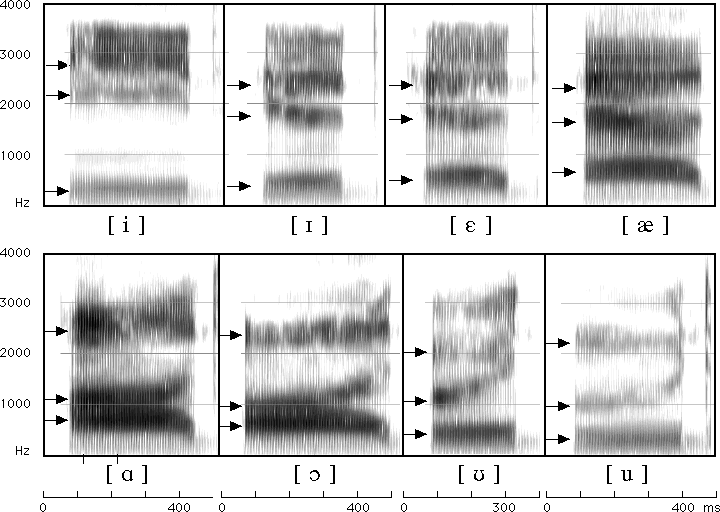


A vowel is voicing passing through (and resonating in) an unobstructed vocal tract!
If we change the position of the tongue, we change the resonances
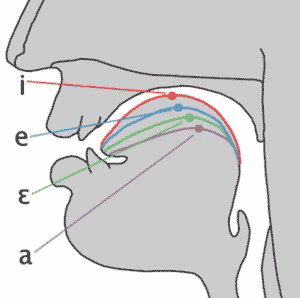
A vowel is voicing passing through (and resonating in) an unobstructed vocal tract!
If we change the position of the tongue, we change the resonances
Different resonances filter the sound differently and determine the vowel quality
Different tongue shapes create different resonances, and different vowels!
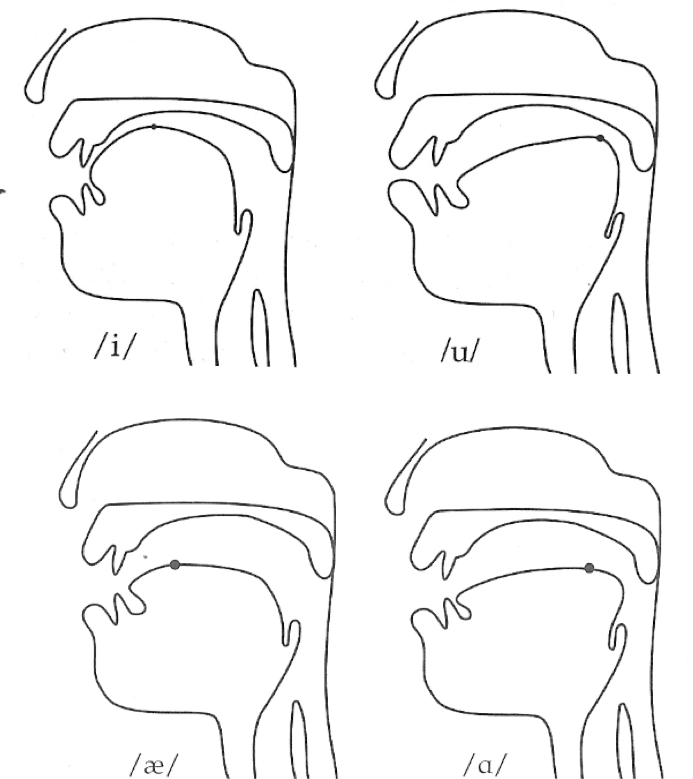
We talk about vowel quality in terms of “formants”
These are bands of the spectrum where the energy is strongest
The frequencies of these formants are our primary cues
Bandwidth and power of these formants can be helpful too
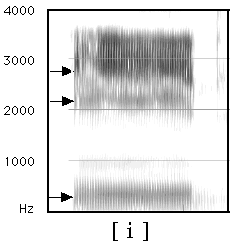
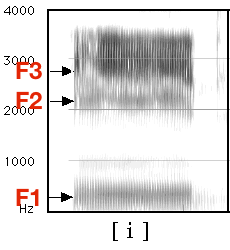
F1 and F2 are generally considered to be the most important
F3 is good for rounding and rhoticity
We talk about them in terms of frequency, because that’s their most crucial characteristic
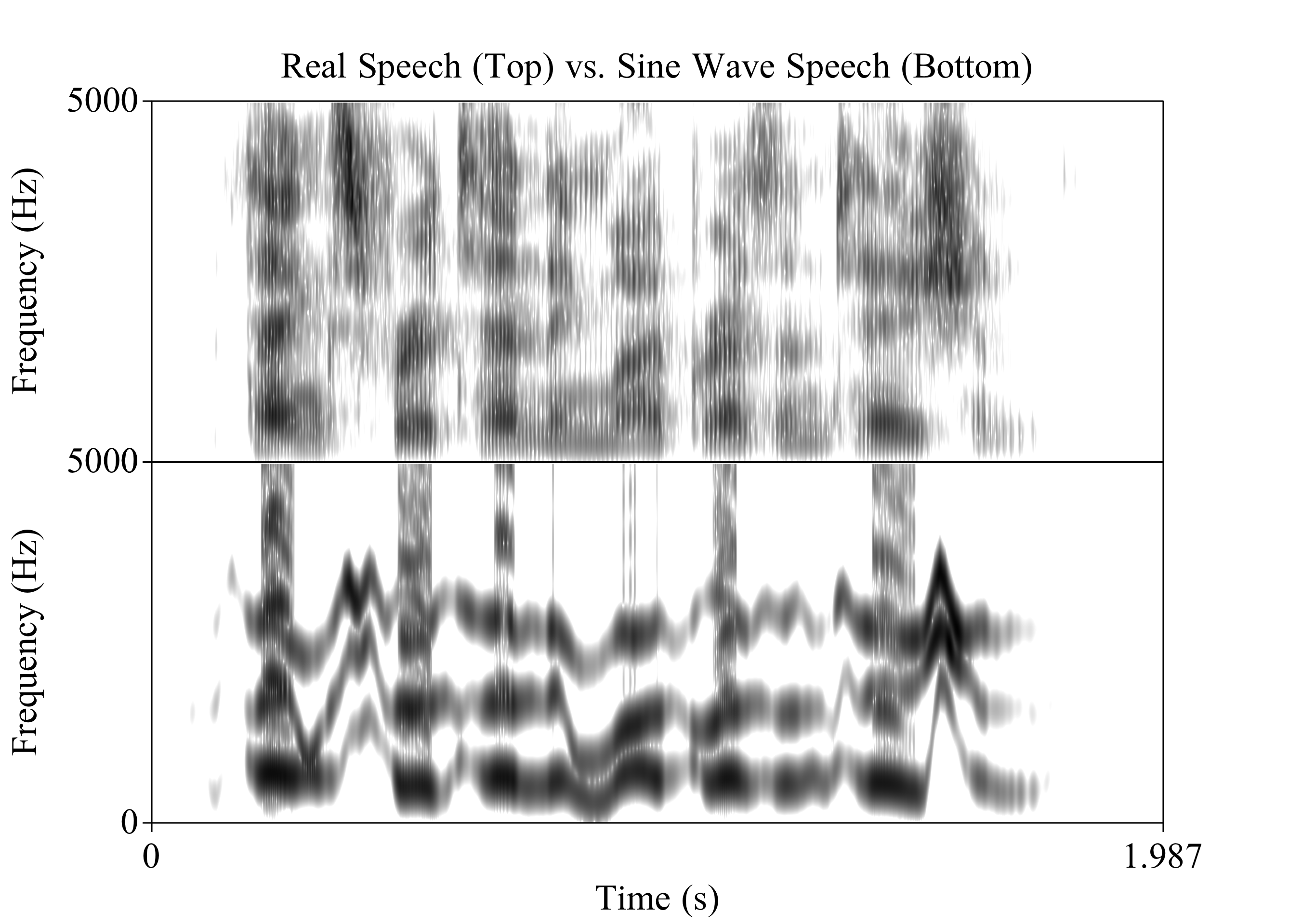
F1:
F2:
F3:
Combined:
Original:
Formants tell us nothing about F0
Things like voice quality and nasality have other spectral reflexes
“Secondary” spectral cues like formant amplitude and spectral tilt can overwhelm formant cues
Vowel recognition is possible just using overall spectral shape
But we just keep coming back to formants as the primary cue to vowel place

Different American English vowels, as spoken by a male speaker

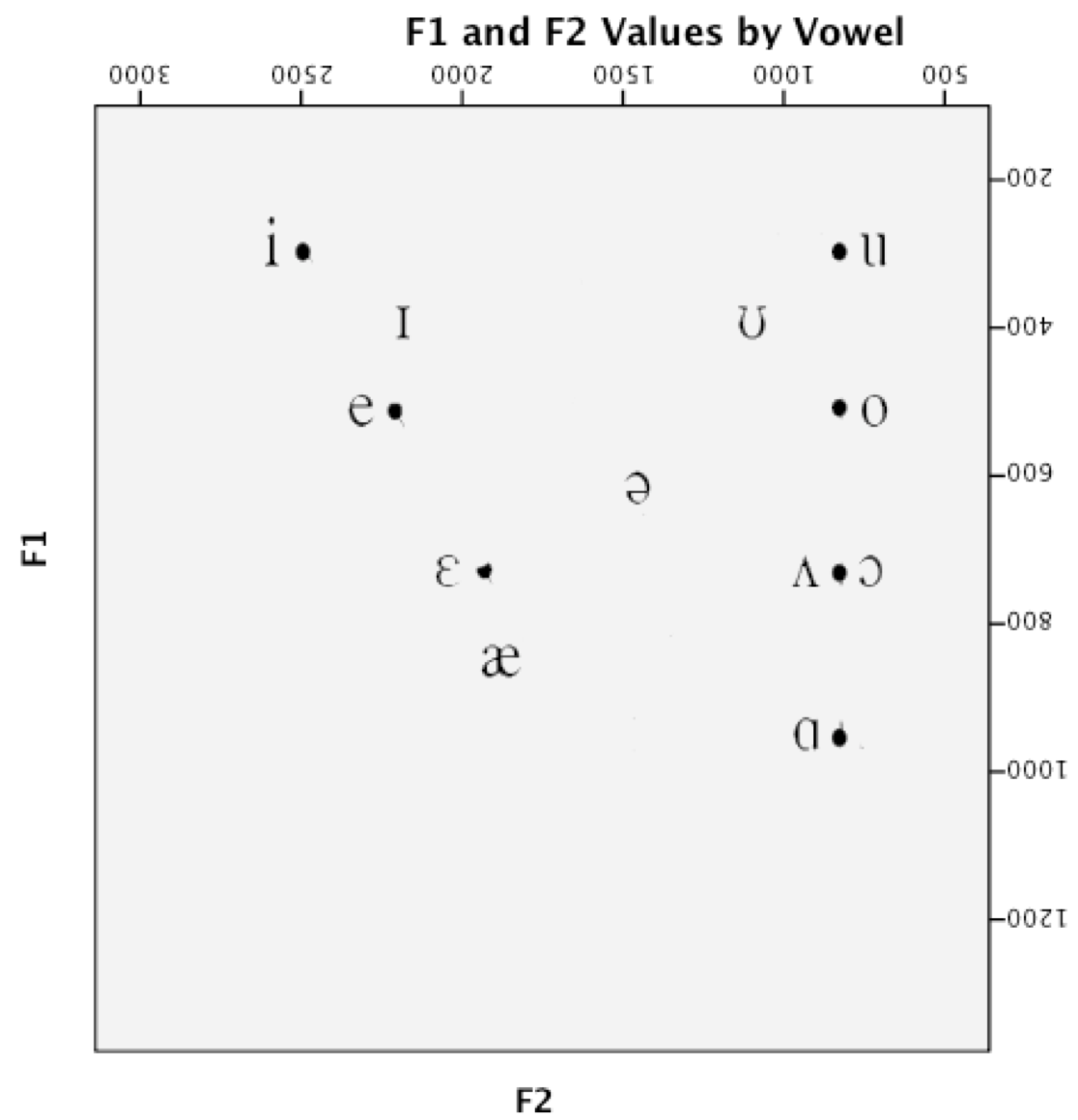

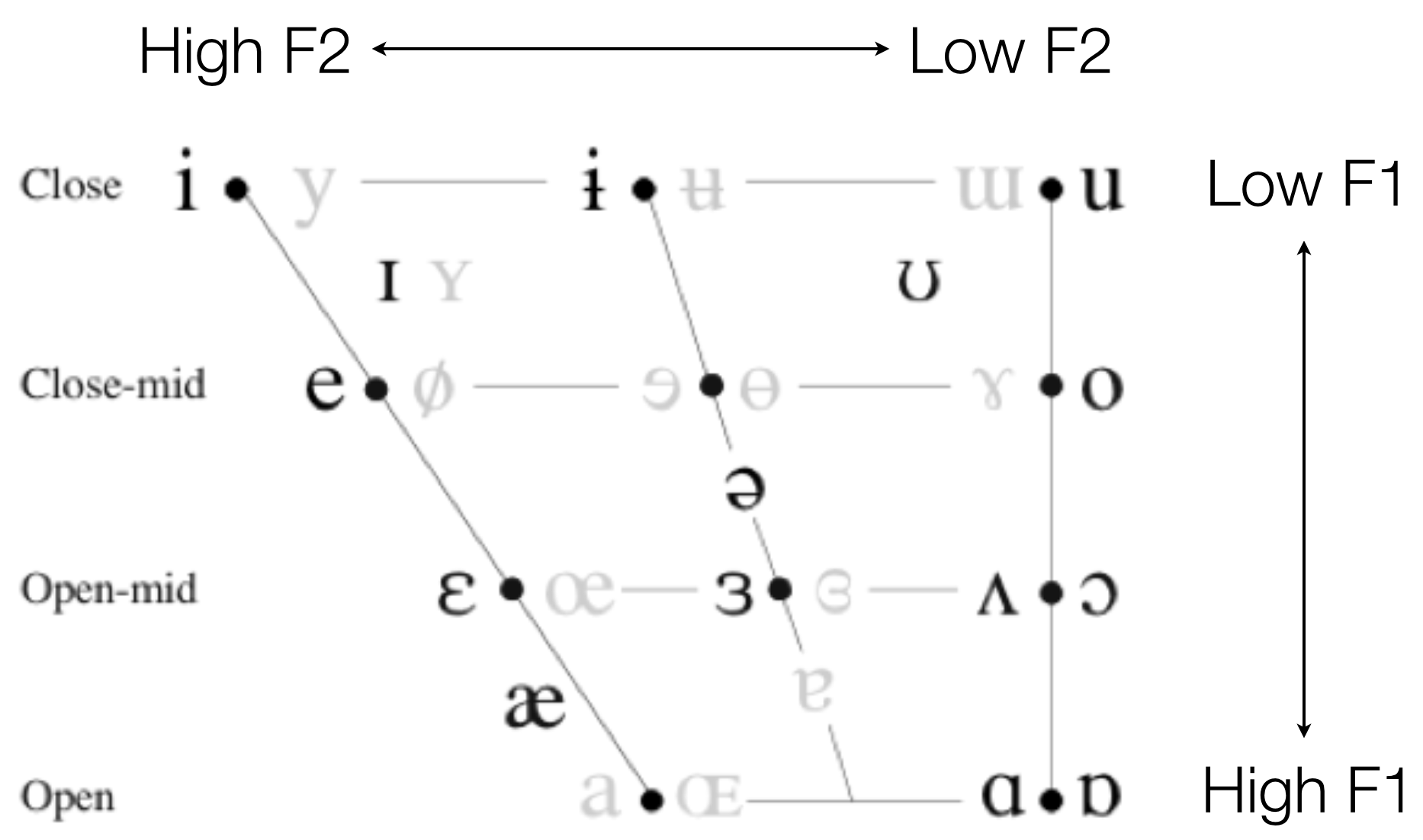
So…
We listen for formants
We figure out their frequencies
Then we know which vowel we’re hearing.
Vowel differences are gradient
Dialect and language variation is everywhere
Speakers vary from person to person. A lot!
Speakers also vary from moment-to-moment
You can make an infinite number of tongue shapes causing an infinite number of vowels.
There’s no “alveolar ridge” to give a steady target
Phonemes have perceptual boundaries
Not all listeners agree on where the boundaries are between, say, /e/ and /ɛ/
Date:
Debt:
?:
??:
???:
The first and last sounds have formants like the typical English /eɪ/ and /ɛ/vowels

… but in the middle, we’re not really sure what’s going on

The vowel inventory in a language has a strong effect on the perception of vowels
If you have lots of vowels, each one gets less acoustic (and perceptual) elbow room


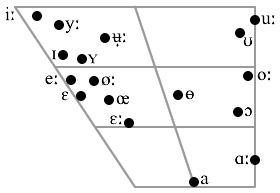
Different speakers produce different resonances, even for the “same” vowels

Different speakers produce different resonances, even for the “same” vowels
Speaker can have colds or allergies, can have more ‘nasal’ voices…
Sociolinguistic factors galore
Every person has a different set of basic vowel formant positions

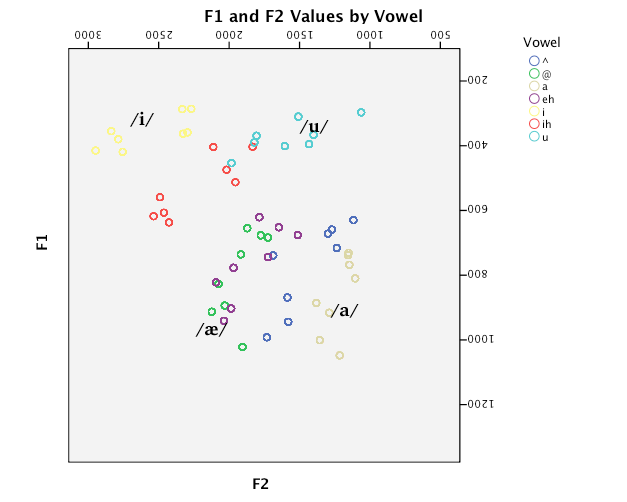
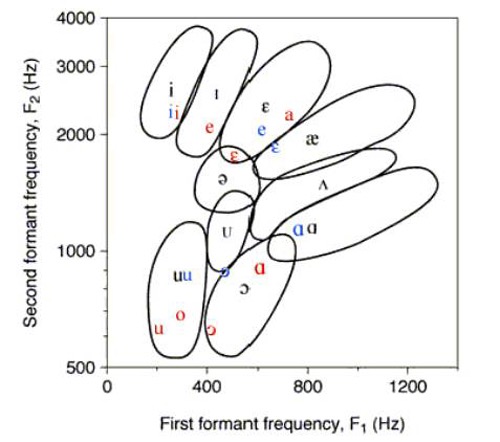
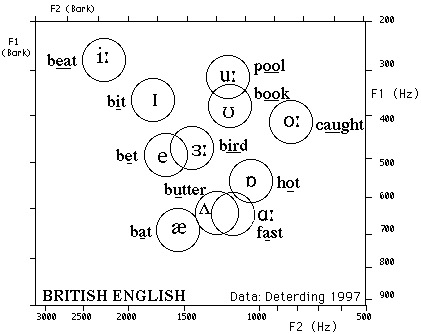
Even the same speaker will have variation from moment to moment
Sometimes we misarticulate, accidentally making the wrong vowel quality
Or we talk with food in our mouths, producing different resonances
Or sometimes, we’re just plain lazy
This leads to constant and massive changes in vowel production





We stack the deck in our favor using the phonology of the language
We use non-formant-related cues such as vowel length
We attend to context
We adjust to individual speakers (or vocal tracts) through Speaker Normalization
Then, if all else fails, we pretend that we understood, and hope for the best



Vowels are spread through the mouth
Languages try to maintain perceptual contrast (to keep things as perceptually unambiguous as possible)
Contrasts that are tough to hear go away!
Rounding is used to distinguish vowels which might otherwise be confusable

Data from Rositske 1939
Context helps us to understand words even if the phonemes are acoustically ambiguous
Easier to understand “Hello” in its normal conversational context
If you’re not expecting a word, you’ll have to fight harder to understand it.
“Hi, John! Partial Nephrectomy!”
“Ohh, Invasive Adenocarcinoma arising in tubulovillious adenoma”
Nobody runs into rooms and shouts “bat!”
Every speaker you meet has acoustically different vowels
We are able to adjust very quickly, and have little trouble with later understanding
The process by which we adjust is called “Speaker Normalization”
This process isn’t entirely understood
| ### History of Normalization |
| * Differences in absolute vowel qualities were noted very early on |
| * Two Competing Theories in the 40’s and 50’s: |
| * Peterson: We identify vowels based on their absolute formant frequencies |
| * Joos: We identify vowels based on their relative formant structures |
| * If Joos is right, then prior context aids in normalization |
| * Ladefoged and Broadbent set out to test that idea in “Information conveyed by vowels” in 1957 |
Ladefoged and Broadbent 1957
Six versions of an introductory sentence were synthesized, each with different formant structures
Four test words were synthesized as well
Listeners heard different combinations of test words and sentences
If vowel perception is about absolute frequencies, the prior sentence shouldn’t matter!
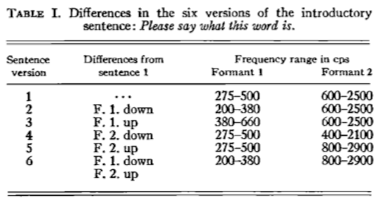
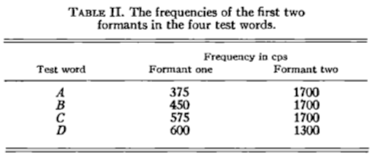
They had to paint what they wanted on glass
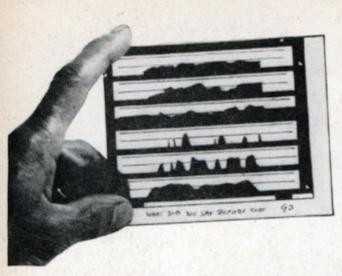
| Then feed it into an analog sound synthesizer |
 |
Stimulus #4:
Stimulus #5:
Stimulus #6:
… but it worked!
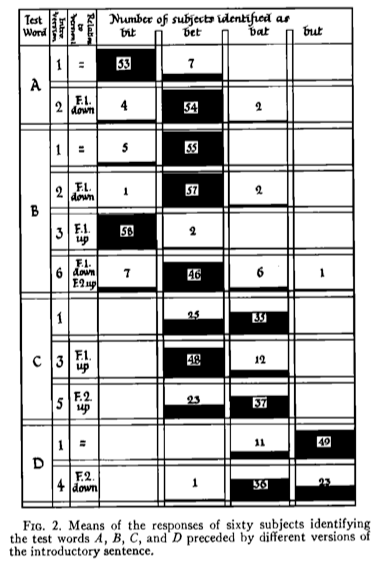
“The linguistic information conveyed by a vowel is largely dependent on the relations between the frequencies of its formants and the formants of other vowels occurring in the same auditory context”
We’ve got two main theories!
Normalization is a process that “happens”
You meet somebody, you create a model of their vowel space, and you move on
These models of speaker vowels are maintained in memory
One model per person, and a new model each time!
We store information from every vowel we hear!
Normalization is then just bulk comparison and probability
One might start with an “English” vowels model
Then, you build a per-speaker exemplar cloud
Both your per-speaker and overall models change

It’s not just about the point vowels (/i, a, u/) as Joos suggested (Verbrugge et. al. 1976)
Context influences Normalization (as in Ladefoged and Broadbent)
Knowledge about the speaker (gender, sociolinguistic data) influences normalization (Strand 2000)
Recent context might be more important than older context (Ciocca, Wong, et al. 2006)
The normalization process shows up in reaction time during vowel identification tasks (Haggard and Summerfield 1977)
Breath sounds don’t provide good information for normalization, and F0 isn’t a critical factor (Whalen & Sheffert 1997)
More context seems helpful, but only to a certain point (Kakehi 1992)
We have to normalize consonants too
Vowel nasality appears to require normalization too (Styler (to appear))
Infants can normalize to vowels (Kuhl 1979)
So can dogs (Baru 1975) and Zebra Finches (Ohms et al 2009)
These finches are a major problem.
Other animals show awareness of vocal tract size differences
“Attributing variation to cause” is something we’re generally good at
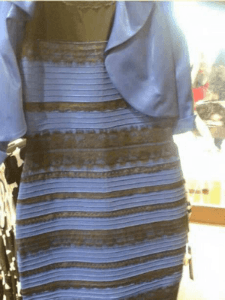
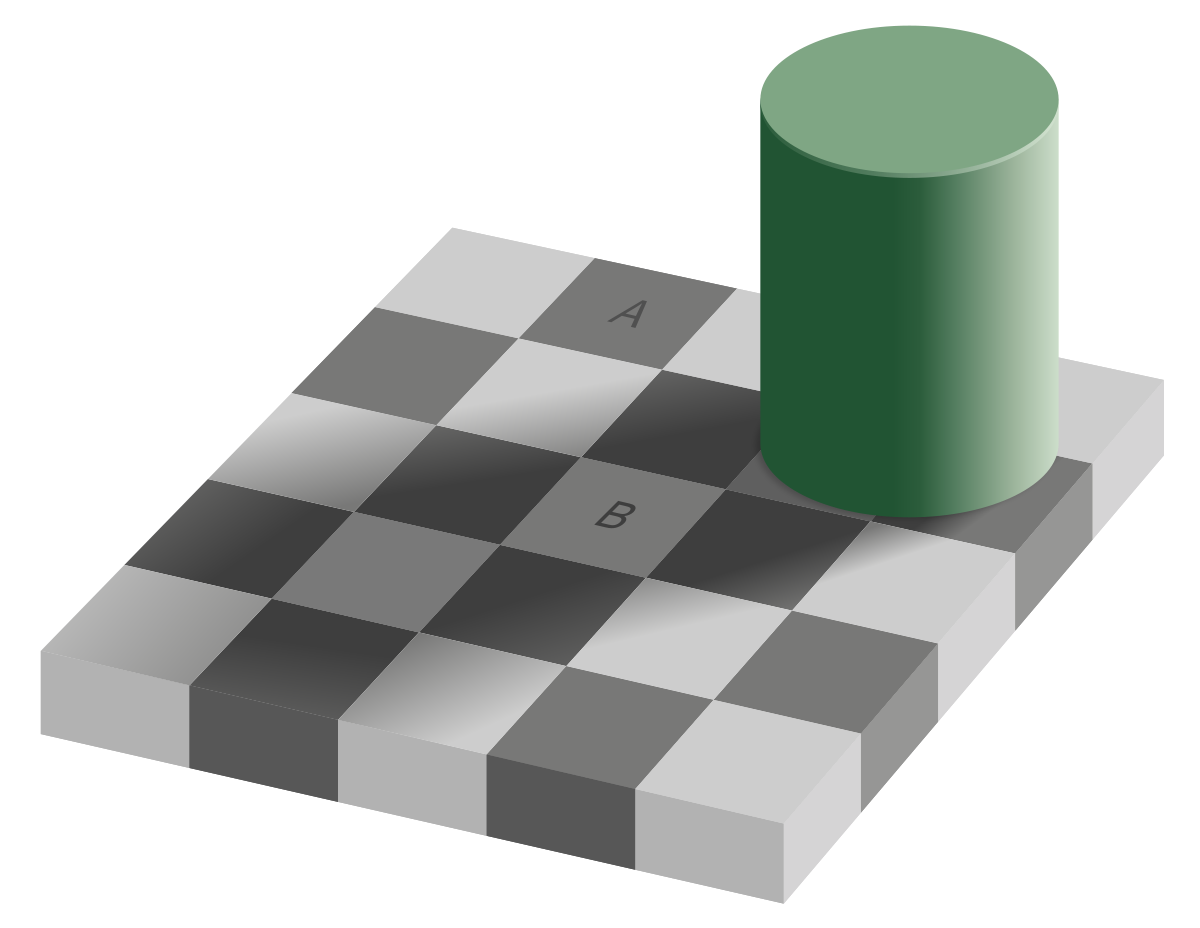 |
|---|
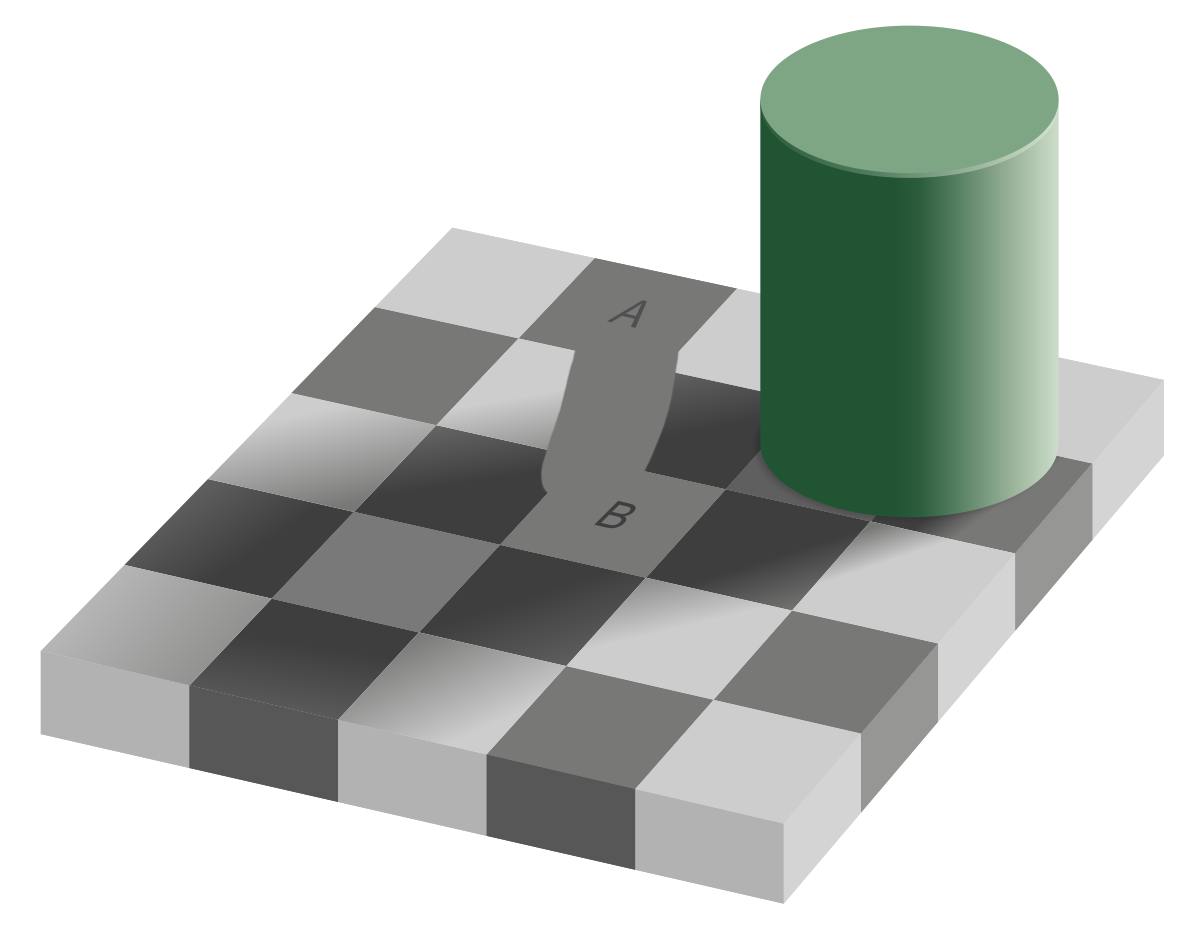 |
“OK, OK, we get it. Nothing’s real. Everybody varies. Speech study is impossible. Let’s change to syntax.”
“Various algorithms have already been proposed for this purpose. The criterion for their degree of success might be that they should maximally reduce the variance within each group of vowels presumed to represent the same target when spoken by different speakers, while maintaining the separation between such groups of vowels presumed to represent different targets.” (Disner 1979)
Allows for more principled across-speaker comparison
Statistical in nature, rather than contextual or “linguistic”

σ is the Standard Deviation of all tokens around the vowel mean
Done for each formant, for each vowel
Leaves you with formant points for each token which are more comparable across speakers
This can be done on your own, or using NORM or vowels() in R

It reduces across-speaker variability, but doesn’t remove it completely
The end results are suitable only for rough comparison among speakers
Disner finds these algorithms good within language
Don’t pretend it’s solved the problem!
| ### Wrapping up |
| * Formants (F1 & F2) are the primary means of identifying vowels |
| * Vowel charts, although well-intentioned, are dirty, dirty abstractions |
| * Vowel perception is complicated by the enormous variation between speakers and tokens |
| * Phonology, Context, and Secondary Cues help to make things perceptually easier |
| * There’s not a strong consensus on how exactly we normalize across speakers |
| - Or how Zebra finches do |
| * Vowel perception is basically magic |
http://savethevowels.org/talks/vowelperception_advanced.html
Baru, A. V. (1975). Discrimination of synthesized vowels /a/ and /i/ with varying parameters (f0, intensity, duration, # of formants) in dog. In G. Fant, & M. A. A. Tatham (Eds.), Auditory Analysis and perception of speech. New York: Academic Press.
Ciocca, V., Wong, N. K. Y., Leung, W. H. Y., & Chu, P. C. Y. (2006). Extrinsic context affects perceptual normalization of lexical tone. The Journal of the Acoustical Society of America, Vol. 119, No. 3, 1712-1726.
Charlton, B. D., Ellis, W. A. H., Brumm, J., Nilsson, K., and Fitch, W. T. (2012). Female koalas prefer bellows in which lower formants indicate larger males. Animal Behaviour, 84(6):1565– 1571.
Disner, S.F. (1980). Evaluation of vowel normalization procedures. The Journal of the Acoustical Society of America, Vol 67(1), 253-261.
Joos, M. (1948). Acoustic Phonetics - Supplement to Language. Baltimore: Linguistic Society of America.
Ladefoged, P., & Broadbent, D. E. (1957). Information Conveyed by Vowels. The Journal of the Acoustical Society of America, Volume 29, Number 1, 98-104.
Lobanov, B. (1971). Classification of Russian Vowels Spoken by Different Speakers. The Journal of the Acoustical Society of America, 49(2B):606–608.
Ohms et al. Zebra finches exhibit speaker-independent phonetic perception of human speech. Proceedings of the The Royal Society of Biological Sciences (2009)
Rositzke, H. A. (1939). Vowel-Length in General American Speech. Language, Vol. 15, No. 2, 99-109.
Verbrugge, R. R., Strange, W., Shankweiler, D. P., & Edman, T. R. (1976). What information enables a listener to map a talker's vowel space? Journal of the Acoustical Society of America, Vol. 60, No. 1, 198-212.
Whalen, D. H., & Sheffert, S. M. (1997). Normalization of Vowels by Breath Sounds. In K. Johnson, & J. W. Mullenix (Eds.), Talker Variability in Speech Processing (pp. 133-143). San Diego, CA: Academic Press Ltd.